INDONESIA/ KALIMANTAN
Indonesian Borneo
Indonesia is the world’s largest archipelago with almost 17,000 islands spreading between the Pacific and the Indian Ocean. It’s a hotspot of world diversity, home to hundreds of distinct cultures and over 3,000 animal species (including Komodo dragons, Sumatran tigers and orangutans). Along with this, Indonesia also houses the largest rainforest in all of Asia.

BORNEO
Borneo, the third largest island in the world, has large areas of forests which encompasse a variety of types comprising mangrove forest, coastal forest, swamp forest, evergreen tropical rainforest, forest over limestone and heath forest, and stretching from sea level up to 2556 m altitude.
Surveys have found more than 700 species of trees in a 10 hectare plot — a number equal to the total number of trees in Canada and the United States combined.
Borneo’s forests have also some of the most biodiversity on the planet, home to more than 230 species of mammals (44 of which are endemic), 420 resident birds (37 endemic), 100 amphibians, 394 fish (19 endemic), and 15,000 plants (6,000 endemic).
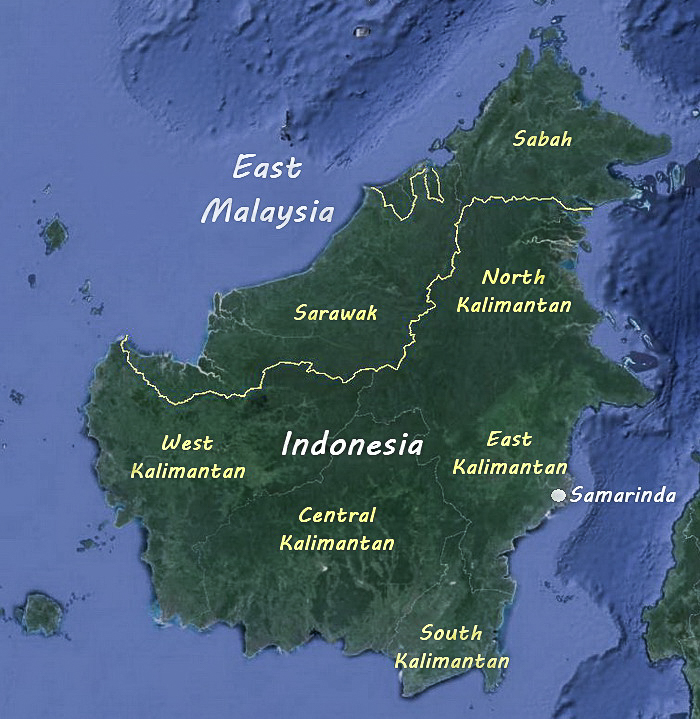
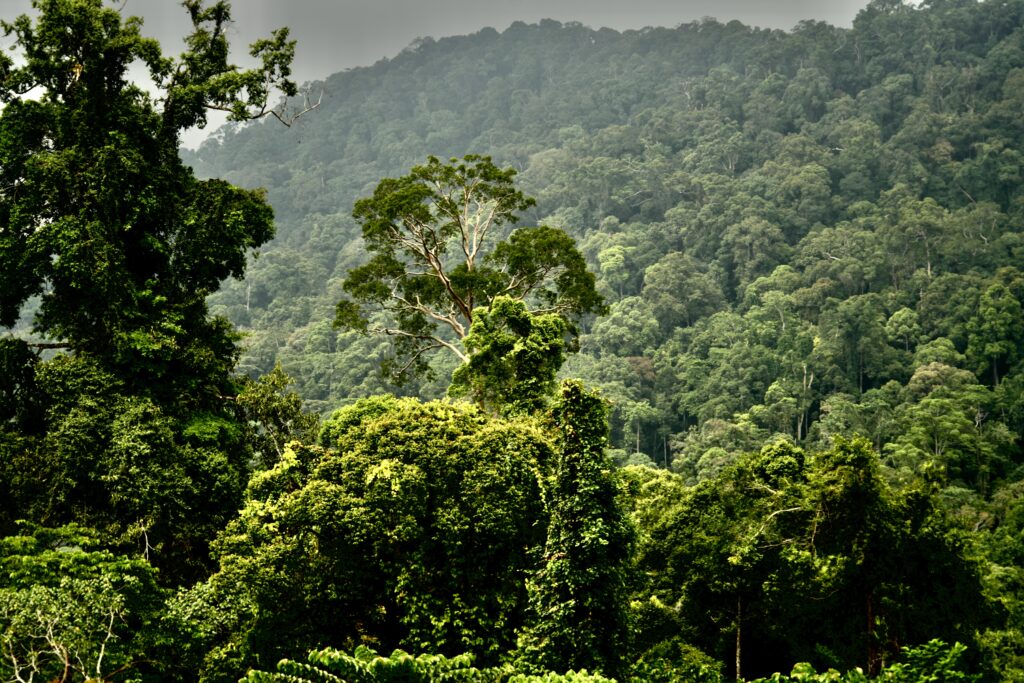
Related Reels
Categories
KALIMANTAN
Home to the world’s oldest tropical rainforests, Kalimantan or Indonesian Borneo is the Indonesian portion of the island of Borneo. It constitutes 73% of the island’s area.
The non-Indonesian parts of Borneo are Brunei and East Malaysia.
It was once covered with dense rainforests. With swampy coastal areas fringed with mangrove forests and a mountainous interior, much of the terrain was virtually impassable and unexplored. Headhunters ruled the remote parts of the island until a century ago.
https://patrickmorell.com/works/people/the-dayaks/#headhunting
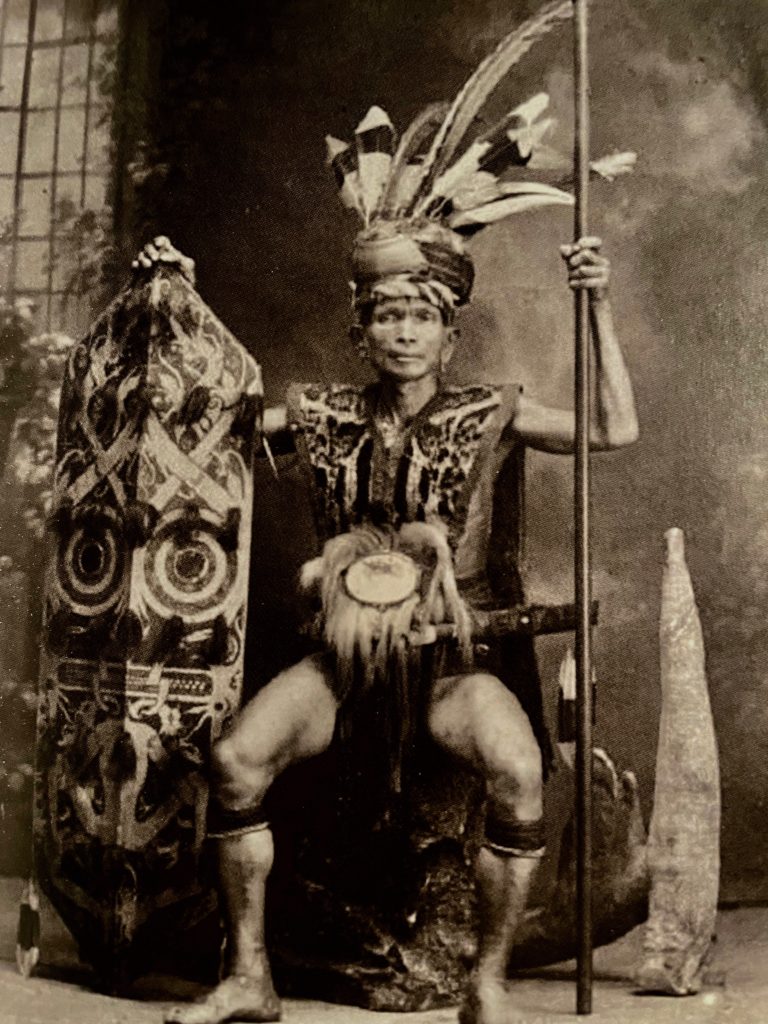
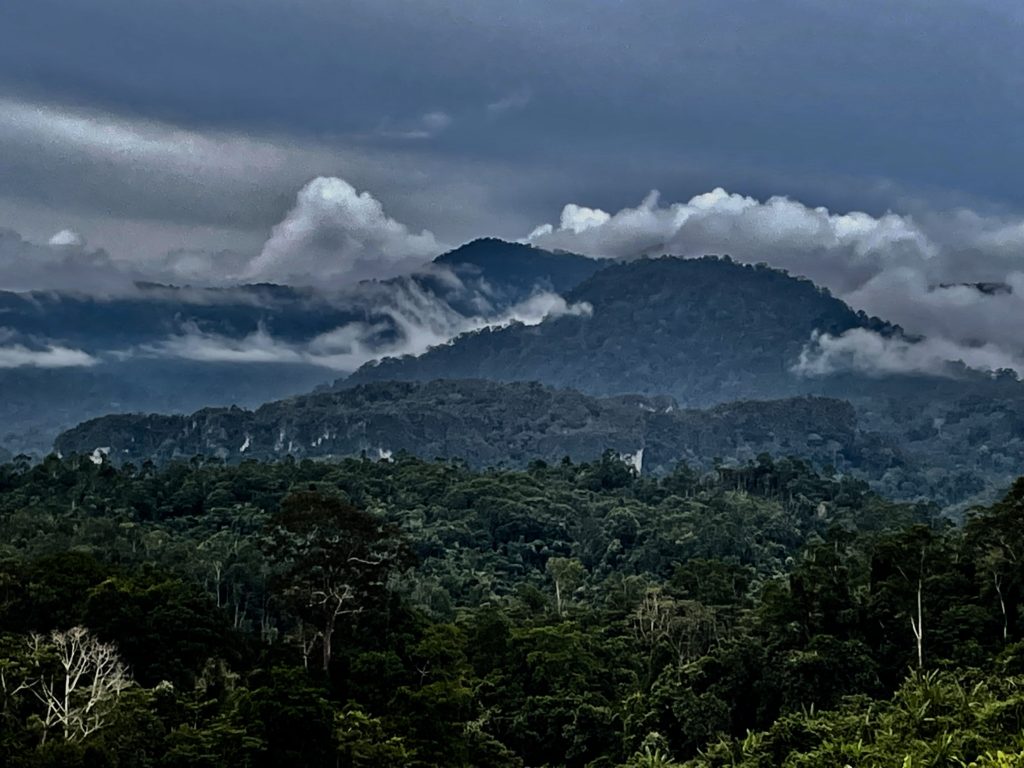
TROPICAL RAINFOREST in EAST KALIMANTAN
East Kalimantan is an Indonesian province on the island of Borneo spanning an area of just under 50,000 square miles, over half of which is covered by 18 million acres of tropical forest. It is one of Indonesia’s wealthiest provinces, both ecologically and economically, but the region is grappling with a 30-year legacy of forest depletion and degradation caused by logging, palm oil production and mining, further exacerbated by raging forest fires.
The very phrase, ‘tropical rain forest’, indicates that the existence of this type of vegetation is primarily conditioned by climate. The tropics are generally considered to be located between latitudes 23° N and 23° S, the ‘tropic of Cancer’ and the ‘tropic of Capricorn’ respectively. At the equator, the mean temperature at sea level is around 26°C, and the prevailing 12-h day length shows little seasonal variation. Though hot, the tropical region therefore never becomes excessively hot compared to desert regions at higher latitudes, where days become longer in summer time, and these high, but not too high, temperatures permit the existence of a true tropical rain forests
MALINAU
The forest, around the town of Malinau in Malinau Regency in north Kalimantan, has one of the richest hectares of forest trees reported from Indonesia. Species possess broad edaphic preferences in terms of soils and diverse biogeographic affinities. Tree species density likely reflects disturbance history and climatic stability as well as a combination of site factors reflecting the complex local geology, and rugged landscapes.
Many of the areas of the forest are still considered “primary forest”
Primary forest refers to untouched, pristine forest that exists in its original condition. This forest has been relatively unaffected by human activities. Primary rainforest is often characterized by a full ceiling canopy and usually several layers of understory.
The ground floor is generally clear of heavy vegetation because the full canopy allows very little light, necessary for plant growth, to penetrate.
Both tropical and temperate rainforests have a lot of fog. In temperate rainforests it can be particularly thick as it comes in off the sea and settles in among the leaves and branches, dripping incessantly and obscuring all. In tropical rainforests, the fog comes from the changes in temperature between night and day. In both cases, it important for retaining the moisture. All kinds of small animals and insects at all heights drink from the water held in leaves and pockets of plants. During seasons of no rain, the fog of the temperate rainforests provides the only moisture for plants. Plants such as bromeliads in the tropical rainforest and the mosses in the temperate rainforest, which have no roots in the ground, gain much needed moisture from the fog.
Rainforest around Malinau
East Kalimantan. Indonesian Borneo/
2023
4KReel Duration: 2’01”
Since its isolation during the late Pleistocene, the fauna of Borneo has evolved in separation from the mainland and nearby islands, creating a distinct assemblage of Bornean species and sub-species. These include large mammals, such as the Sunda clouded leopard, also the largest carnivore in Borneo, Bornean orangutan, Sumatran rhinoceros, and pygmy elephant, a subspecies of Asian elephant that is much smaller in size than the mainland elephants.
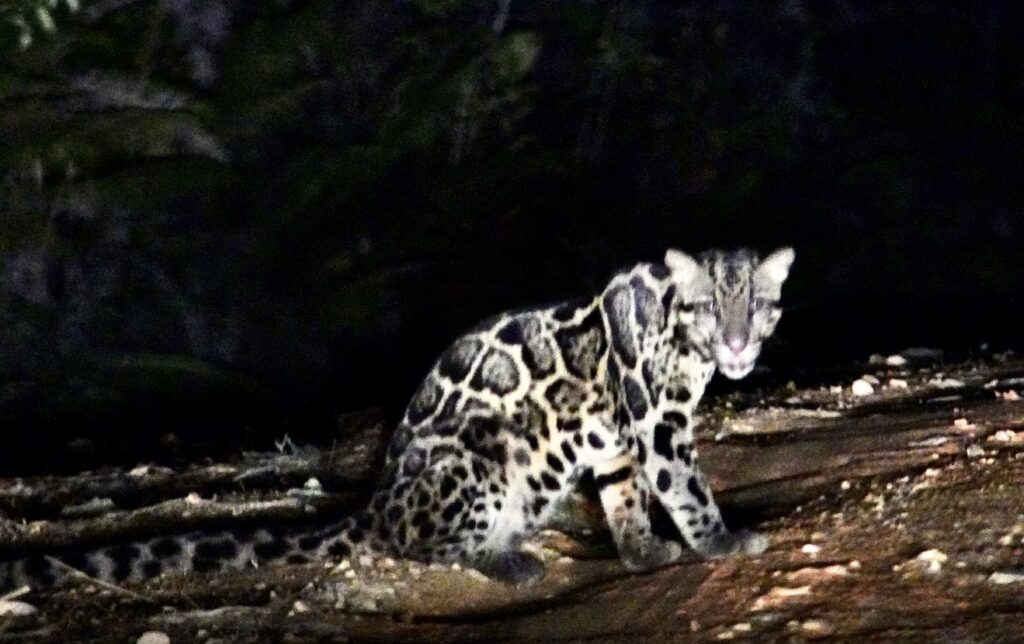
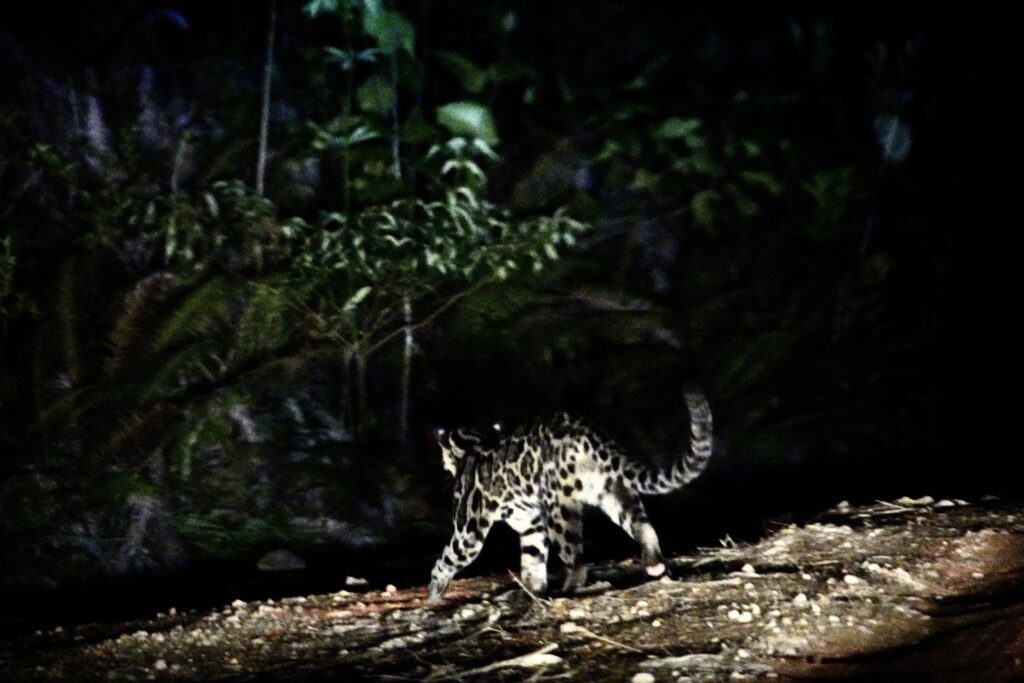
BERAU
While many scientists have come to study this region, opportunities for observation are becoming increasingly scarce with the current perils facing the forests of Kalimantan.
Still, many species still inhabit these very dense forests.
In the following clip you can hear sparsely some of the sounds of the forests. Gibbons. Macaques and a chorus of birds and frogs.
RAINFOREST # 2
BERAU Regency
East Kalimantan. Indonesian Borneo/
Sound of gibbons and birds.
2023
4KReel Duration: 1’48”
The geology is complex, with a matrix of limestone, volcanic rocks, schist- gneiss complexes, and sedimentary rocks. The climate is tropical, with over 4,000 mm of annual rainfall through the year. Temperatures range between 27 and 35°C, while humidity can reach 90%.
KUTAI NATIONAL PARK. East Kalimantan. Indonesian Borneo
Kutai National Park or more commonly referred to as TNK (Taman Nasional Kutai) is a national park located in East Kutai Regency and part of the territory of Bontang City in Kalimantan (Borneo). The total land area of this national park is around 192 thousand hectares.
There are several types of ecosystems that can be found in this national park area. First is the mixed dipterocarp forest in the east while in the western part there is the Ulin-Meranti-Kapur forest. Along the coast of the Makassar Strait there are mangrove forest vegetation and coastal plants. There are also freshwater swamp forest vegetation, kerangas forest vegetation, and flooded forest vegetation featured in this library.
(SOURCE: Wikipedia)
Undisturbed lowland primary forest in Kutai, East Kalimantan is usually distinguished by dominance of dipterocarp species in number of individuals, in basal area and by their emergence to more than 50 m in height. Forests in most lowland concession areas have been logged selectively and suffered from surface forest fires at least twice since 1970.
KUTAI NATIONAL PARK
East Kalimantan. Indonesian Borneo/
2022
Drone ny Dominique Clarisee
4K
Reel Duration: 1’48”
Orangutans. Kutai National forest
The Kutai National Park extends over an area of 2,000 km2, part of the former Kutai Game Reserve which has been protected since the 1970s. However this status did not prevent the logging of a third of the forest in subsequent years and the following introduction of mining companies. In an attempt to prevent further deforestation the Kutai National Park was established in 1982. Nevertheless, the great Borneo fires of 1982/83 destroyed large sections of the forest, and the constant encroachment of people along the eastern boundary continues to reduce the true park area. Approximately only 30% of the primary growth forest remains.
Kutai National Park is still home to around two thousands orangutans.
Orangutans are great apes native to the rainforests of Indonesia and Malaysia. They are now found only in parts of Borneo and Sumatra, but during the Pleistocene they ranged throughout Southeast Asia and South China. Classified in the genus Pongo, orangutans were originally considered to be one species. From 1996, they were divided into two species: the Bornean orangutan (P. pygmaeus, with three subspecies) and the Sumatran orangutan (P. abelii). A third species, the Tapanuli orangutan (P. tapanuliensis), was identified definitively in 2017 in Sumatra and is already now on the list of species endangered!
The orangutans are the only surviving species of the subfamily Ponginae, which diverged genetically from the other hominids (gorillas, chimpanzees, and humans) between 19.3 and 15.7 million years ago.
Bornean orangutan populations have declined by more than 50% over the past 60 years, and the species’ habitat has been reduced by at least 55% over the past 20 years.
The Bornean orangutan differs in appearance from the Sumatran orangutan, with a broader face and shorter beard and also slightly darker in color.
Known for their distinctive red fur, orangutans are the largest arboreal mammal, spending most of their time in trees. Long, powerful arms and grasping hands and feet allow them to move through the branches. These great apes share 96.4% of our genes and are highly intelligent creatures.
Some say the gaze of an Orangutan will penetrate you so deep that it is hard to keep your eyes out of him or her.
I hope you’ll feel the same in watching this 5 minutes clip.
“Pepe” is a male 52 years old, still living in the wild, in the Kutai forest .
Specialists say he is a little depressed because the females don’t want him anymore.
There is definitely sadness in his eyes, maybe some contempt too. He is the closest of us. Sometimes words are not needed.
“Pepe” Bornean Orangutan. (P. pygmaeus)
Shot in Kutai National Park
East Kalimantan. Indonesian Borneo/
2022
4K
Reel Duration: 7’10”
The name orangutan means “man of the forest” in the Malay language. In the lowland forests in which they reside, orangutans live solitary existences. They feast on wild fruits like lychees, mangosteens, and figs, and slurp water from holes in trees. They make nests in trees of vegetation to sleep at night and rest during the day. Adult male orangutans can weigh up to 300 pounds. Flanged males have prominent cheek pads called flanges and a throat sac used to make loud verbalizations called long calls. An unflanged male looks like an adult female. In a biological phenomenon unique among primates, an unflanged male (younger ones) can change to a flanged male for reasons that are not yet fully understood.
Orangutans are elusive.
They spend their days mostly alone, high in the treetops of the lush rainforest of Borneo.
Orangutans can live up to 55 years in the wild.
One of our closest living relatives, they are the most solitary of the great apes, spending almost all of their time in trees.
Orangutans in Borneo also can spend some time on the ground; contrary to the Sumatran Ourangutans which could the prey of other wild animals such as the Sumatran tiger.
Deforestation linked to logging, the production of palm oil and paper pulp, and hunting all pose threats to orangutans, whose populations have plummeted in recent decades.
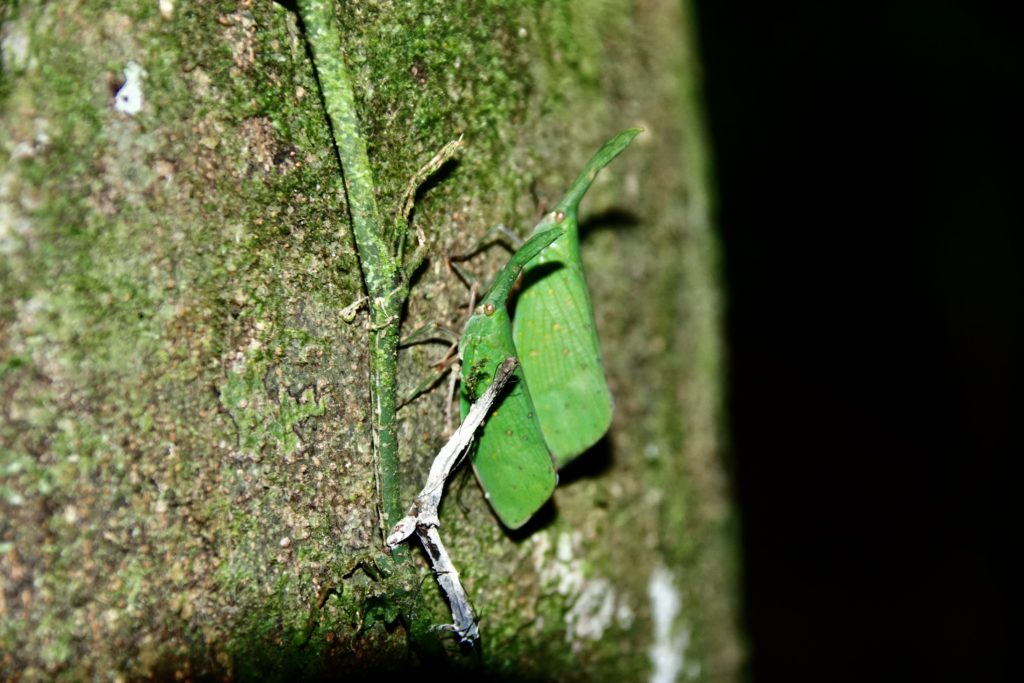
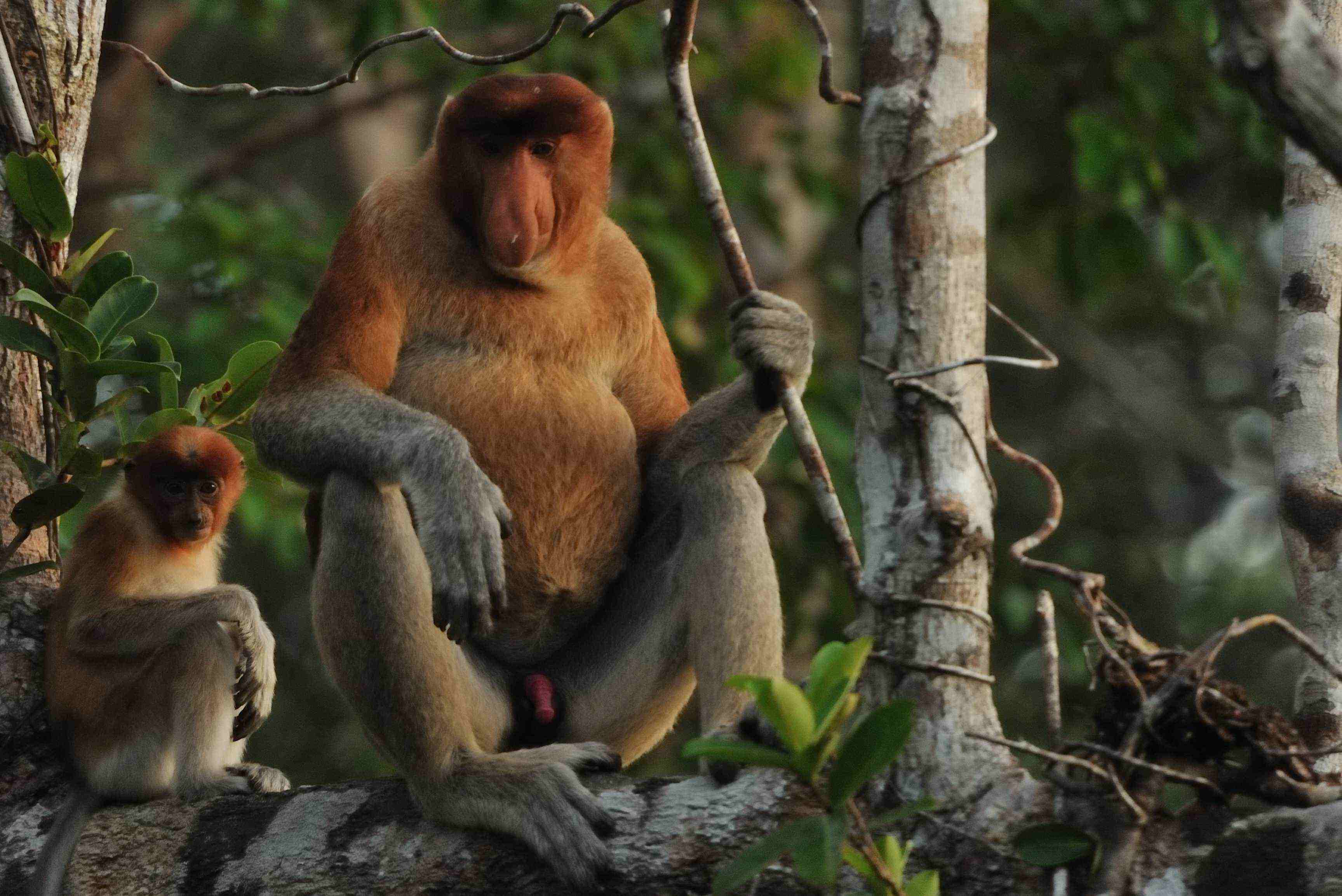
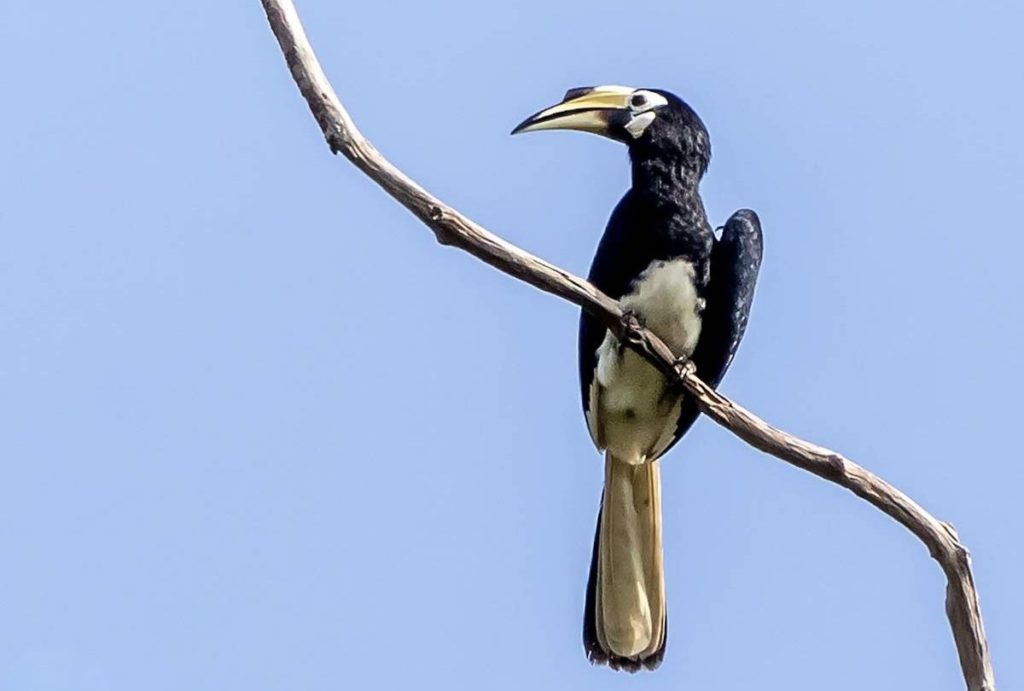
Biodiversity
In recent years, tropical forests have received more attention and have been the subject of greater environmental concern than any other kind of vegetation. There is an increasing public awareness of the importance of these forests, in storing carbon dioxyde through photosynthesis and releasing it back into the atmosphere through decomposition.
And thus diminishing source of countless products used by mankind, not only for their effects on soil stabilization and climate, but as unrivalled sources of what today we call biodiversity.
Threats to the continued existence of the forests represent threats to tens of thousands of species of organisms, both plants and animals.
Borneo island consists of 15,000 plant species, and more than 1,400 amphibians, birds, fish, mammals, reptiles and insects.
Borneo covers an area of 743,330 square kilometers (287,000 square miles) with different biomes.
Biomes refer to the major ecological community, which is predominant vegetation and characterized by adaptations of organisms to that particular environment, in this case biome is the tropical rainforest.
Borneo forests are some of the most biodiverse on the planet and with ideal climate to contain organisms.
It is a heaven for biologists, faune and flora specialists!
KUTAI NATIONAL PARK
East Kalimantan. Indonesian Borneo/
2022
4K
Reel Duration: 3’26”
TREES
GENERAL FLORISTIC DIVERSITY OF KALIMANTAN Lowland forest
The area where lowland forest occurs refers usually to the area below 700 m above sea level, and does not include specific habitats like kerangas forest, swamp forest, coastal forest and mangrove forest.
Most of the Kalimantan forests are in this category, where the Dipterocarp tree species may be dominant. In many cases, the dominance of the Dipterocarpaceae tree in the area is related to their trunk or bole sizes, which is usually very large. It is different from the family of Euphorbiaceae, which is also very often dominant, but the dominance is related to the higher number of genera and species found.
Nine genera of Dipterocarpaceae are found in Kalimantan.
They are Shorea, Anisoptera, Parashorea, Dipterocarpus, Cotylelobium, Dryobalanops, Hopea, Vatica and Upuna. From the 10 genera of the Malaysian Dipterocarps, only Neobalanocarpus has not been recorded from Borneo so far. This species occurs in Thailand and in Peninsular Malaysia.
As the most suitable habitat, it is well known that the lowland forests consist of the highest diversity of plants, especially trees.
The most durable timber species “iron wood” (Eusideroxylon zwageri) is mostly adapted to flat lands along rivers, sometimes dominant, and it is extremely slow growing.
Other common and important tree species in lowland primary forests in Kalimantan are Koompassia excelsa, Pometia pinnata, Dracontomelon dao, Durio spp., Artocarpus spp., and Dialium spp.
These species, except Koompassia excelsa, are important and well known because of their fruits, which are edible. Sindora spp. and Palaquium spp. are known for their timber quality. Pometia pinnata and Dracontomelon dao are some of the trees which usually grow along the rivers and small tributaries.
Source: National Library of Indonesia Cataloging-in-Publication Data
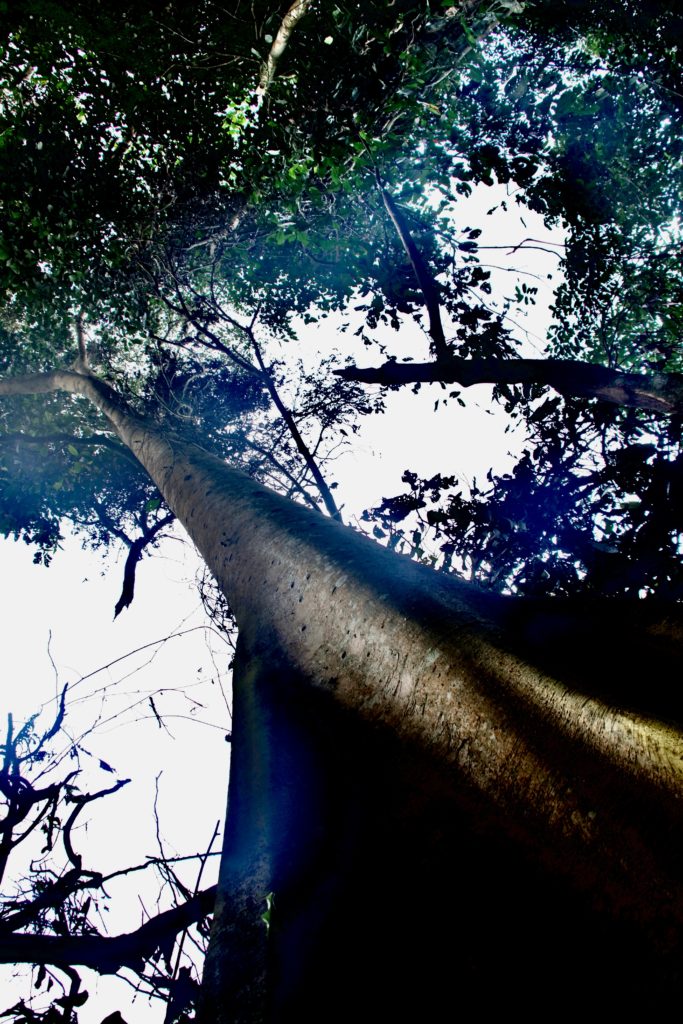
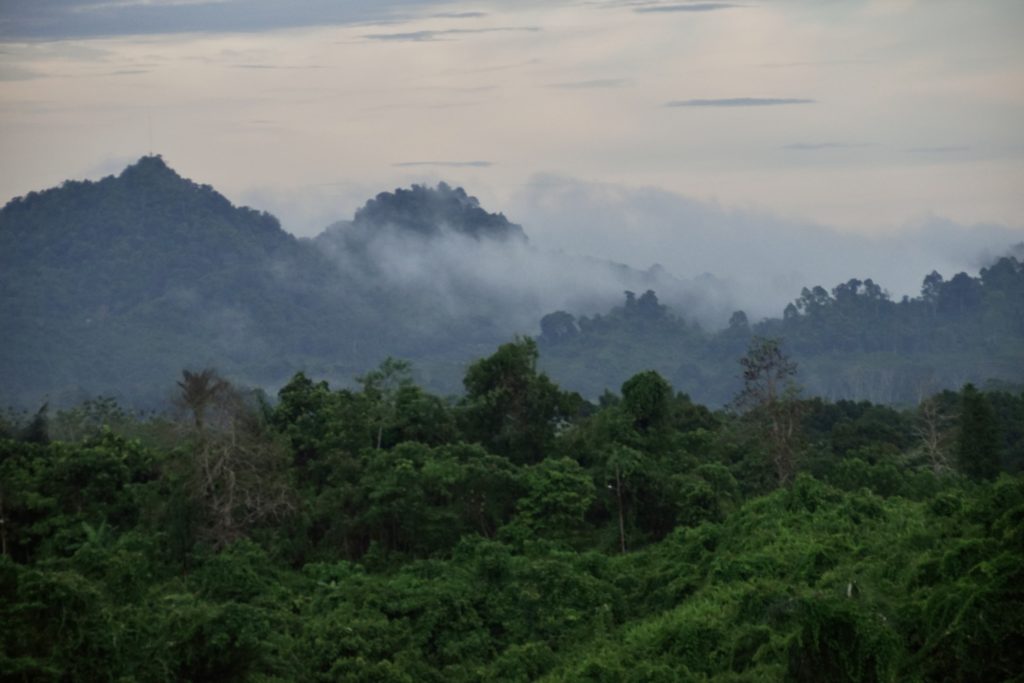
RIVERS OF EAST KALIMANTAN
The river’s waters, rainforests and floodplains are home to a wealth of flora and wildlife found nowhere else in the world. Almost 150 indigenous freshwater fish species found here include the critically endangered freshwater or Irrawaddy dolphin (Orcaella brevirostris). And about 300 species of birds, 70 of them protected.
Except for a still very few logging roads the rivers are still the main ways of transportation for the indigenous communties of Kalimantan (Dayaks and Punans)
Treks and short detours from the main rivers reveal a treasure trove of unusual wild orchids, orangutans, sun bears, reptiles, proboscis monkeys and the Hornbill the sacred bird for the Dayaks which is supposed to carry the souls of the dead to the “upper world”
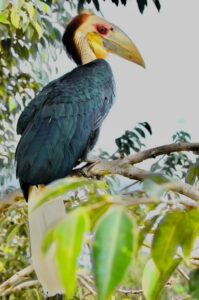
MAHAKAM River
The Mahakam River (Indonesian: Sungai Mahakam) or “Broad Water Surface” is the third longest river in Borneo after Kapuas River and Barito River.
It is located in East Kalimantan, Indonesia.
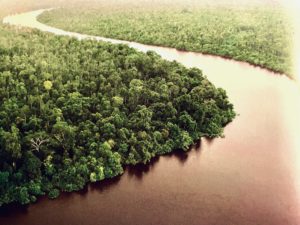
The fabled and mighty Mahakam River snakes sinuously, for over 900 kilometers from the central mountains of the Muller Range to the town of Samarinda and the sea and through some of the world’s richest remaining ecosystems. Its waters also carry a cargo of human history. Sultans, pirates, Dayaks and European adventurers and explorers taken over by the call of the wild, plied the river in search of treasures, territory and human heads.
MAHAKAM river
from Long Bagun to Tiong Ohang. Upper Mahakam
East Kalimantan. Indonesian Borneo/
2022
4K
Reel Duration: 11’42”
Rising in the highlands near the Muller Range the upper river tumbles over a series of dangerous rapids.
From the village of Long Bagun, 300 kms from the headwaters, to the last village of Long Apari about 200 kms upstream few travelers brave the perilous white water of the upper river, we did.
Transport and supplies are expensive in this isolated area.
The shores of the river depicted in these reels, is covered with totally virgin dense jungle almost uninhabited areas.
Passed the river rapids, are small settlements of Dayak Tribes which live by subsistence agriculture and the occasional sale of birds’ nests, rattan and gold.
We are here in the “Heart of Borneo”
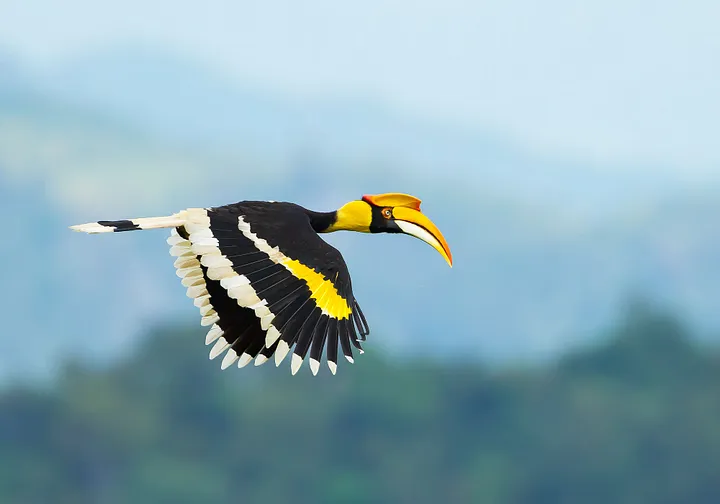
KELAY River Berau
The Kelay River is a river of Borneo, in the province of East Kalimantan, Indonesia, about 300 kilometers (190 mi) north of the provincial capital Samarinda. It is a tributary of the Berau River.
KELAY river
Berau Regency. near Marasa
Rehabilitation camp (wildlife)
with Orangutans feeding.
2023
4K
Reel Duration: 7’47”
Tropical waters, whether they be giant rivers, streams, or oxbow lakes, are almost as rich in animal species as the rainforests that surround them. But they, too, are increasingly threatened by human activities, including pollution, siltation resulting from deforestation, hydroelectric projects, and over-harvesting of resident species.
Since 2008, the Nature Conservancy (TNC) has helped to design and implement jurisdictional programs in the district of Berau and the province of East Kalimantan.
The region represents a microcosm of Indonesia’s sustainable development challenge to balance the conservation of forests with economic growth while addressing underlying issues of weak land tenure rights, poor land use planning, and widespread granting of concessions that lead to rapid forest destruction.
https://www.nature.org/content/dam/tnc/nature/en/documents/TNC_CaseStudy_Indonesia_FINAL_lowres.pdf
SAJAU River
Since 2021, after receiving information and research results from the Eijkman Institute for Molecular Biology, YKAN has assisted the Punan Batu Benau Sajau community and facilitated the community to receive recognition and protection as indigenous peoples (MHA) by the Bulungan District Government.
This acknowledgment is the first step to then push for the proposal of the Batu Benau Forest, their area of residence, as a customary forest.
YKAN ( Yayasam Conservacy Alam Nusantara)is an Indonesian organization which prioritizes community engagement and advocates for community-based conservation, ensuring that local residents are active participants in safeguarding the environment on which their lives depend.
Geopark Sajau river
Bulungan Regency
East Kalimantan. Indonesian Borneo/
2023
4K
Reel Duration: 11’42”
The Sajau River Geopark is a very important and unique designated area, perhaps even the only one in Kalimantan, where the karst ecosystem is still used as a residence for the Punan Batu communities.
Working together with the Provincial Government of North Kalimantan and the Government of Bulungan Regency, YKAN also assisted in encouraging the establishment of a geopark for the Mount Batu Benau area.
The existence of this designation is to improve the community-based economy, conservation, and research and education needs.
The latest research from the Karst Geography Study Group at Gadjah Mada University identified 11 points of geological diversity that have the potential to be used as geological heritage (geoheritage).
MANGROVES
Some of the forests in Borneo are Tropical rainforest mangroves swamp forests, peatlands swamp forests, montane forests (found on the slopes of mountains), heath forests (moist forests) and dipterocarp forests.
These physically diverse habitat provide different conditions for different organisms to live. Therefore, the biodiversity is increasing as the organisms have found their own favorite habitat to live.
The Semayang Lake is a floodplain lake area that has unique habitat characteristics in the East Kalimantan province, Indonesia, because on the water bodies there are swamps and lakes habitats. Swamp habitats are characterized by a large coverage of aquatic plants and shallow water.
Peatlands are among the most carbon-rich ecosystems on Earth. In a natural condition, peatlands have a net cooling effect on climate, reduce flood risk, and support biodiversity.
Water & Trees 1
Semayan Lake (estuary of Mahakam river)
East Kalimantan.
2022
4K
Reel Duration: 3’26”
Mangroves 2
Semayan Lake (estuary of Mahakam river)
East Kalimantan.
2022
4K
Reel Duration: 4’36”
Mangroves are found in estuaries and coastal regions. These are estimated to cover around 1 million hectares in Borneo, a small fraction of their original extent due to conversion for agriculture.
There are about 76 lakes spread in the Mahakam river basin and about 30 lakes are located in the middle Mahakam area including the three main lakes (Lake Jempang 15,000 Ha; Lake Semayang 13,000 Ha; Lake Melintang 11,000 Ha). The lakes levels are seasonally fluctuated from 0.5 m – 1 m during dry period to seven meters during rainy season. The Mahakam lakes and surrounding wetlands act as water storage as well as a trap of sediment contained in the water flowing into the lakes which are now known to become shallower, presumably as a result of an imbalance between sediment input and slow subsidence.
Fishing is the primary source of livelihood in the Mahakam lakes area, most of the people around the lakes are fishermen. The middle Mahakam lake area is an area of intensive fishing activity with a productivity of 25,000 to 35,000 metric tons per year since 1970.
Mangroves 3
from around Muara Pahu to the mouth oh the mighty Mahakam
2022
4K
Reel Duration: 5’16”
Peat swamp forests are the dominant form of remaining lowland forest in Borneo today. These swamp forests appear in places where dead vegetation becomes waterlogged and, too wet to decompose, accumulates as peat.
Tropical peatlands, which form over hundreds of years, are giant stores of carbon.
However, landcover and land use changes in this ecosystem have incurred a synergistic exposure to drought and wildfires.
Deforestation and forest degradation through combustion and decomposition of forest biomass and soil carbon have become global issues because of their
(SOURCE: https://www.researchgate.net/publication/332760993_FIRE-DRIVEN_BIOMASS_AND_PEAT_CARBON_LOSSES_AND_POST-FIRE_SOIL_CO2_EMISSION_IN_A_WEST_KALIMANTAN_PEATLAND_FOREST